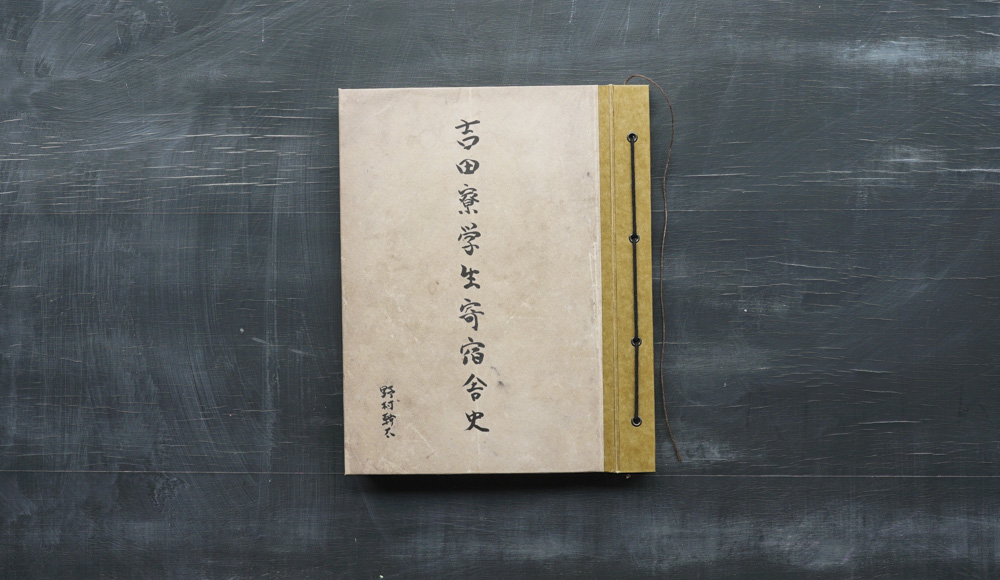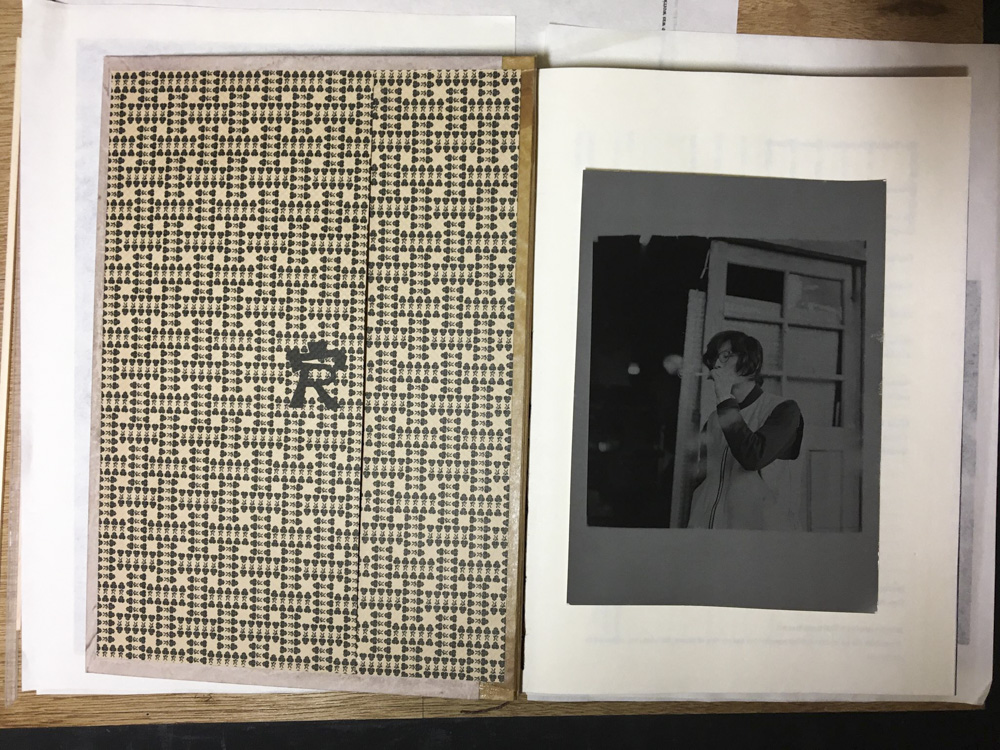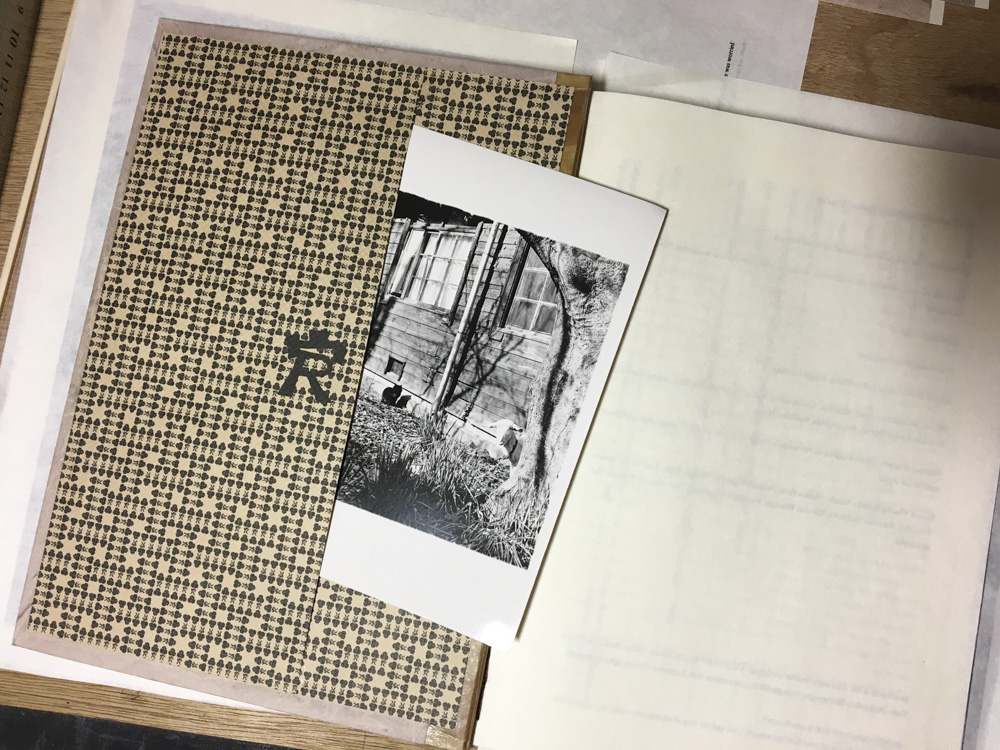SOLD OUT NOW! THANK YOU! Kanta Nomura’s artist book “The Yoshida Dormitory Students’ History”
106 EDITIONS ALL SOLD OUT NOW!
Kanta Nomura’s artist book “The Yoshida Dormitory Students’ History” is now available for pre-order.
This project is about the 106-year-old Yoshida Dormitory at Kyoto University, the oldest existing student dormitory in Japan.
The artist Kanta Nomura began photographing the dormitory around 2008, and in 2017 his work was exhibited at the Yoshida Dormitory as part of the KYOTOGRAPHIE KG+ program. Since then, the project has developed with the RPS mentorship program, and the book project was also developed in the experimental workshop Atlas Lab “AKINA BOOKS Workshop: Stillness and Movement – Cinematic Editing and Dummy Books” in March 2018. In March 2019, we organized his solo show, and while the situation regarding the survival of the Yoshida Dormitory has changed, Nomura has continued to create dummies. The photos were developed using the old photographic paper that had been used and left in the darkroom by the dormitory students, and the process made Nomura, who is not a dormitory student, rethink what it means as a photographer to “leave things behind.”
In July 2018, a photo article by the artist was also published in Yahoo! News.
Please click here to read it. (text in Japanese only)
This is the story of the Yoshida Dormitory, the oldest student dormitory in Japan.
The Kyoto Imperial University dormitory, the predecessor of the Yoshida Dormitory, was established in 1897, more than 100 years ago. The Yoshida Dormitory is a self-governing dormitory that has been run by students themselves for a long time. It was also a place where a lot of people from inside and outside of the university gathered for the performance of plays and music and fostered student culture.
In recent years, the university has demanded that all of its residents move out, citing dilapidated buildings and other reasons, and has been at odds with residents who want the dorm to survive. The divide between the two sides has not been bridged and in April 2019, the university filed a lawsuit against the student residents who were seeking to remain in the building.
It has been about ten years since I started taking pictures of the Yoshida Dormitory, where the future is uncertain.
The first time I visited Yoshida Dormitory, I stepped through the front door of the abandoned house and saw sandals, dirty bedding, spice and liquor bottles with their mouths open in gloom. In addition to the body odors like oil and sweat, there was also a certain peculiar smell, such as time-lapsed food, cigarette butts, and dampness soaked into the floor and tatami mats. Everywhere in the building, there is an unmistakable smell of many different types of grime that have been accumulated by the students over the generations. Each time I visited, they became a sign and became more dense and felt, and I was strongly attracted to the energy that the sign gave off.
The smell also brought back vivid memories of my own student life. At the same time, I was envious of the passions that I never had when I was a student, and I felt that I had not fully burned out my time as a student… It may have been a decade of traveling through their memories based on their scents and reliving their student life at the same time.
One hundred years have passed since the Yoshida Dormitory was built, and there are traces and memories left behind by the countless students who gathered here and passed by. It was richly fermented and still has a strong lingering aroma.
Kanta Nomura
English proof: Megan Saltzman, Jinhwa Chang

©︎Kanta Nomura / The Yoshida Dormitory Students’ History
Kanta Nomura’s artist book “The Yoshida Dormitory Students’ History”
Number of pages : 214 pages
Size : 265 mm x 213 mm
sold out now! Limited number of production: 106 copies (all editions signed)
Price: 16,500 JPY (Asia) 17,000 JPY (Central America, Middle East, Europe) 17,700 JPY (South America, Africa) Consumption tax and postage included. Will be shipped by Japan Post’s international air freight service.
A complimentary hand-printed print in the dormitory’s darkroom, size: cabinet (130mm x 180mm) included randomly selected by the artist. (The print is not edited.)
(The artist used old photographic paper found in the dorm’s darkroom. All images and types of printing paper are different and cannot be selected.

©︎Kanta Nomura / The Yoshida Dormitory Students’ History

©︎Kanta Nomura / The Yoshida Dormitory Students’ History
